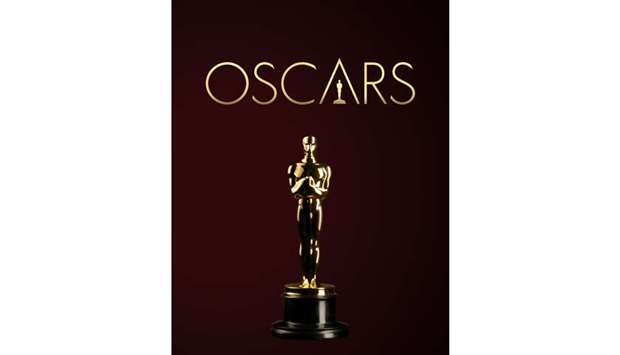The Oscars have a problem, and it’s not going to be easily solved.
In 2015, frustrated by yet another all-white slate of acting nominees (and the fact that seven out of eight best-picture candidates focused on stories of white men), former attorney April Reign coined the hashtag #OscarsSoWhite, drawing attention to the academy’s roster of primarily old, male and white voters. (A 2012 Los Angeles Times investigation found nearly 94% of Oscar voters were Caucasian and 77% were male, with a median age of 62.) Facing boycotts and a hail of negative publicity, then-academy president Cheryl Boone Isaacs promised change: In early 2016, the academy pledged to double its number of female and diverse members by 2020.
And yet here we are, in 2020 — with an almost all-white slate of acting nominees (19 out of 20), an all-male directing roster and seven out of nine slots for best picture filled with stories of white men.
The academy has indeed dramatically expanded its roster over the last several years, adding several thousand new members to a list that now numbers approximately 9,000. (The academy has been around since 1927; its roster includes Oscar winners, nominees and others with significant experience in the motion-picture industry. Because of lifetime memberships, many members are older; because of the reality of the industry, most are white and male.) And while the majority of those new members — all of whom conform to the academy’s stringent membership guidelines — are women and/or people of colour, the overall numbers are still far from being reflective of society at large. By 2019, per the most recent available numbers, available, academy membership was 31% female and 16% racial minority. It’s an improvement, but not a sea change.
And … why should this matter? Aren’t the Oscars just, basically, a trade show in which insiders vote for the people they know, and everyone gets to go to a fancy party afterwards? Why are we concerning ourselves with the membership demographics of a private group? Just because I happen to think Greta Gerwig deserved a directing nod for Little Women more than Todd Phillips deserved one for Joker, or that Lulu Wang’s The Farewell deserved nominations in multiple categories, doesn’t mean everyone thinks so, right? (Obviously many members of the academy didn’t.)
But representation matters because success at the Oscars, like it or not, shapes what movies we see in theatres. If only a certain kind of story is getting told, other stories are crowded out. And so movies like The Farewell, Us, Waves, Portrait of a Lady on Fire, The Last Black Man in San Francisco, Hustlers — all acclaimed, all telling stories outside the white, male experience — go unrecognised at Oscar time, without one nomination in the bunch. Maybe voters genuinely thought these weren’t as good as Joker, The Irishman, Ford v Ferrari and the like. Or maybe — more likely, I suspect — many didn’t even watch them. Perhaps they were overwhelmed by a shortened voting cycle (the academy, responding to slumped ratings for the telecast and complaints of award-season fatigue, moved the awards two weeks earlier this year), and by the dozens of DVD screeners mailed to academy members by studios hoping to catch some Oscar glory. And perhaps, looking at those piles of movies, they were drawn to the “name” movies first, or to those that most closely matched their own frame of reference. (When Little Women was nearly shut out of the Golden Globes, producer Amy Pascal told Vanity Fair she worried that “unconscious bias” kept many male voters from watching her film, and other films not told from a white, male perspective.)
So while the evolution of the academy’s membership is important, the solution to the #OscarsSoWhite problem involves broader action: How to draw voters’ attention to smaller movies, the distributors for which may not have the resources to send out thousands of screeners or buy prominent advertising? And how to take the industry in a direction where more diverse stories — projects that don’t immediately resemble movies made by Hollywood hundreds of times before — can be told?
There are steps that can be taken to address the first question: Actor Carey Mulligan, among others, has suggested academy voters should need to document that they have actually seen the movies they have voted for. (This is procedure for several categories — documentary, international feature film and short films — but not the major ones, in which some voters may check off familiar names without actually seeing the films in question.)
Reign, in an editorial in Variety last month, floated the idea of making all Oscar-eligible films available to academy members online, levelling the playing field. Time will gradually alter the academy’s demographics further; change doesn’t happen overnight, or even over a year.
And Reign noted in her piece that while some of the onus for change is on the academy and Hollywood, “there’s also onus on us as consumers, as regular moviegoers who pay our hard-earned dollars to either sit in a theatre or stream movies at home. We must choose not to reward mediocrity. We must continue to use our platform — our ratings and our dollars — to support films that reflect a myriad of experiences.”
Two years ago at the Oscars ceremony, Frances McDormand took a moment in her speech to ask all the nominated women, in any category, to stand. “OK, look around, everybody,” she said. “Look around, ladies and gentlemen, because we all have stories to tell and projects we need financed.” If that moment inspired even one greenlit project, the resulting film is one small step in the right direction. The academy, and all of us, just need to keep marching.
— The Seattle Times/TNS

..


